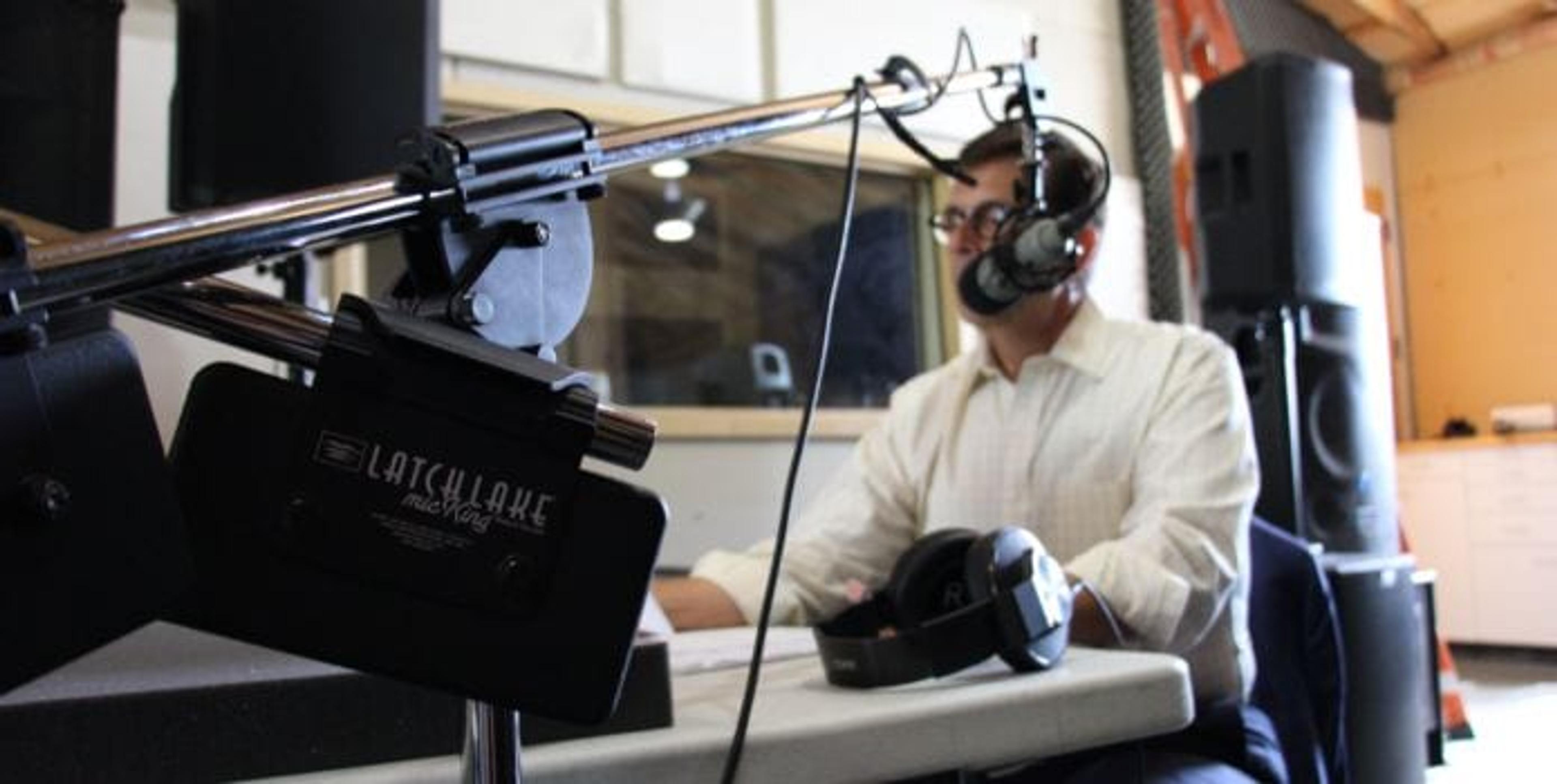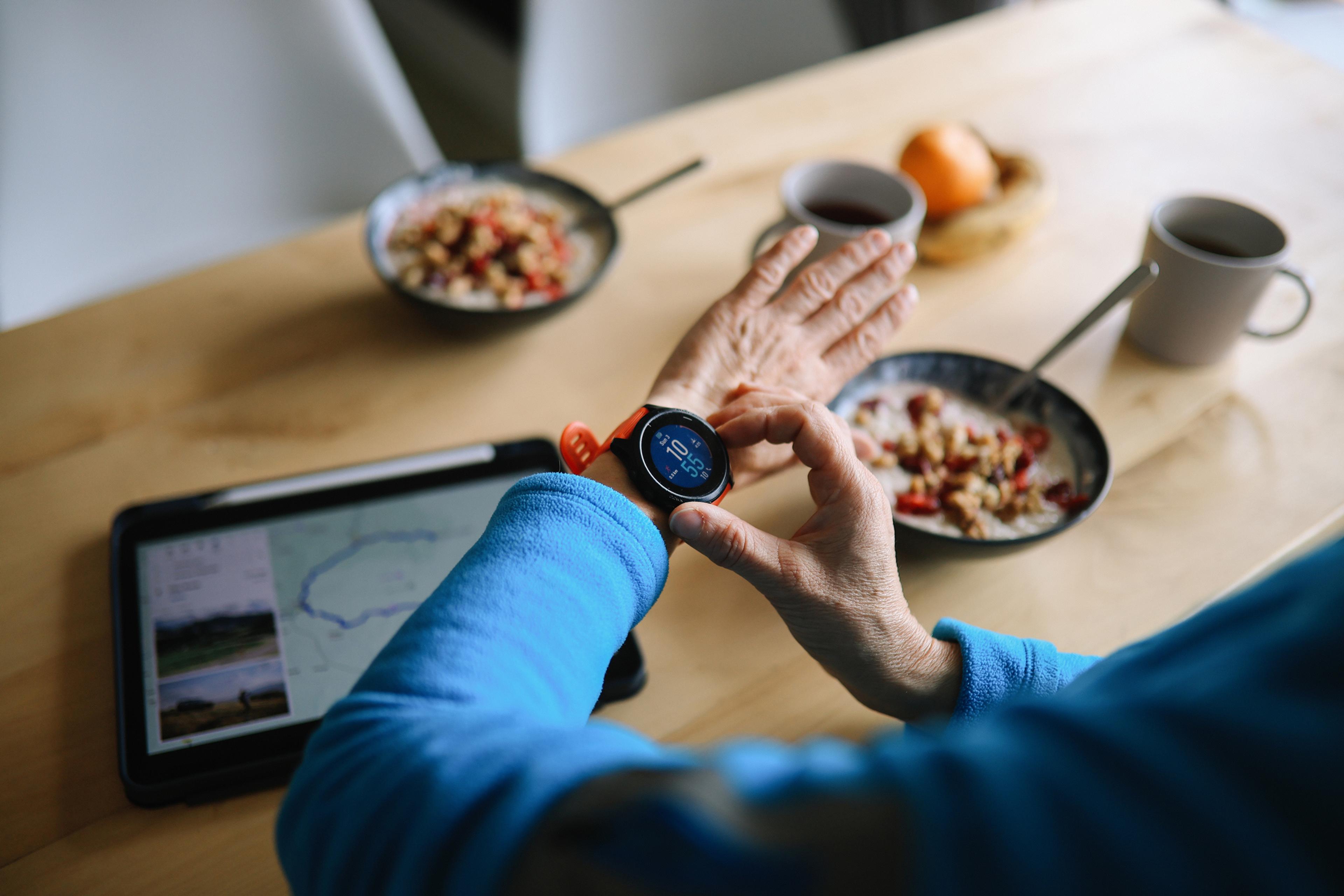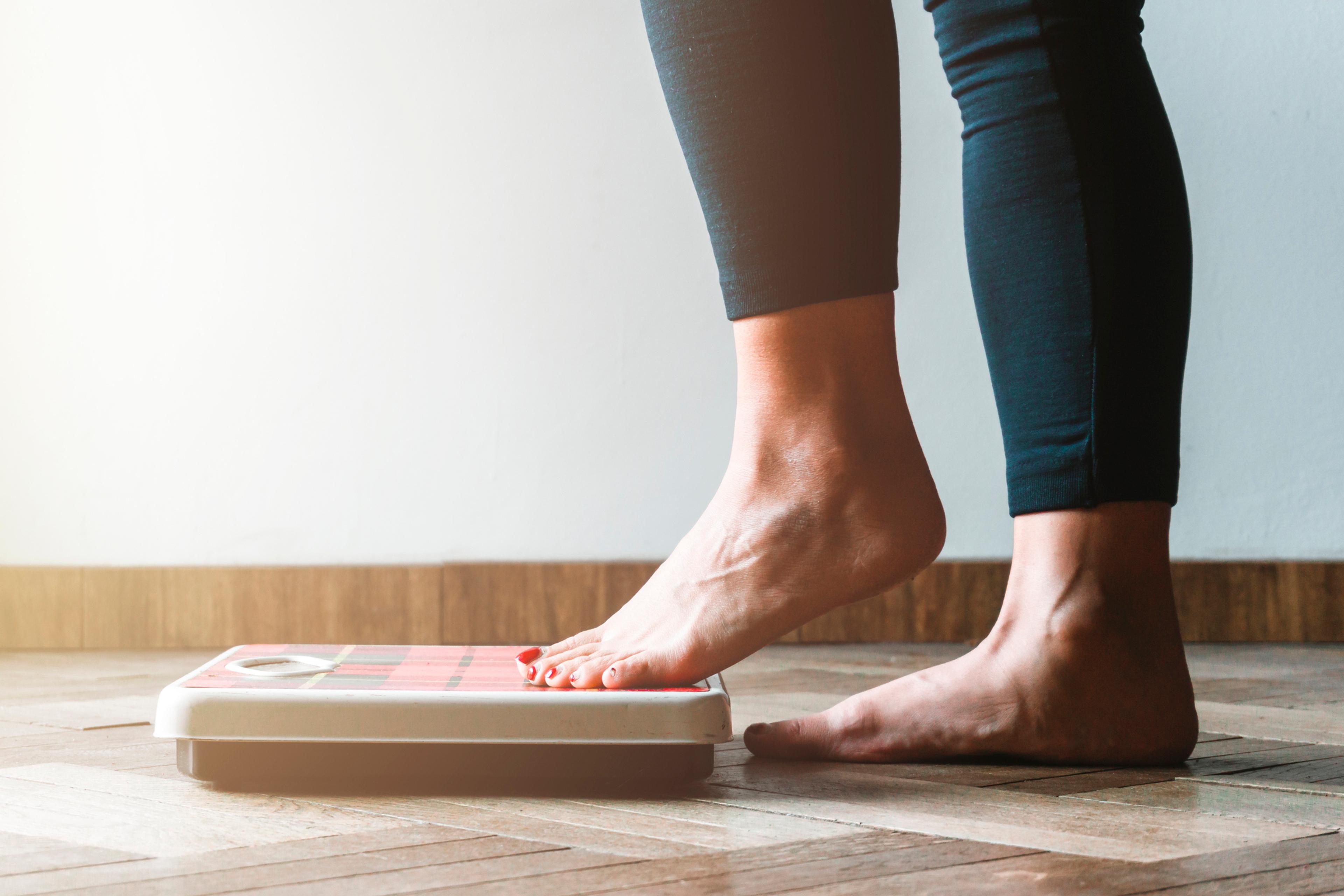Chuck: This is A Healthier Michigan Podcast, episode 10. In this episode, we talk about the importance of health benefits and social interaction.
Chuck: Welcome to A Healthier Michigan Podcast, the podcast dedicated to navigating how we improve our health all across the board, trying to find balance through well-being. And you can have new small healthy habits that you can get started today, right now, maybe while you’re listening. I’m your host, Chuck Gaidica. Each week, we get to sit down with a certified health expert from Blue Cross Blue Shield of Michigan. We do a deep dive into topics, and we’re covering across the board ways you can feel better, get better, and actually give you some takeaways, things you can start now.
Chuck: In this episode, we’re going to be talking about the idea of social interaction, and how you can be contagious, you can affect others, and of course, they can influence you as well. Cindy Bjorkquist is back with us. This has been such a joy these past few episodes. We’ve been at this, what, three, four years now together?
Cindy: Yeah, right.
Chuck: No, it’s only been just a few episodes, but it’s like we’re old friends.
Cindy: Couple hours.
Chuck: This is such a joy. Cindy is here. She is currently Director of Health and Wellness Programs at Blue Cross Blue Shield of Michigan, the largest health insurer in the state of Michigan with over 4.5 million members. You started out back in the day as an exercise physiologist, right?
Cindy: Mm-hmm (affirmative), yeah.
Chuck: Yeah, Spring Arbor University?
Cindy: Spring Arbor University, yeah, my-
Chuck: Yeah, and then on to that little place, MSU.
Cindy: Go Green, yeah.
Chuck: Yeah. And so, your journey is fascinating, because here you are now, helping us navigate this space of wellness and well-being, and today we’re talking about … Forgive me, but I’m contagious. How can social contagion now-
Cindy: You are, you’re smiling, you’re laughing.
Chuck: Oh, you’re kind.
Cindy: Laughing is a contagious behavior, did you know that?
Chuck: It is that.
Cindy: It is. Yawning, contagious behavior.
Chuck: Yeah, yeah.
Cindy: So this kind of breeds something further than that. Yawning is contagious, laughing is contagious; what this is based on is the social … what’s called the social contagion theory, social events and conditions that make crowd behavior possible, so it extends into this place called social contagion. This kind of behavior contagion is where certain behaviors by one person are copied by others who are in contact with that person, and we hear this about a lot. You might change your behavior based on your friend set, or your friends would change their behavior based on you. So it could be a good or a bad behavior change, but who you hang out with has a lot to do with all of this.
Chuck: Well, and when you say that, we know … If we go back in time, how many times have we seen a movie, or we’ve heard in people’s lives, “Oh, my husband’s out with the boys”? I mean, you know, that phrase.
Cindy: Yeah, yeah.
Chuck: Implying that it’s a bunch of guys who are influencing him the wrong way. And yet, even in the workplace or out of the workplace, we can have family members that are going to influence us with their downer attitude.
Cindy: Right.
Chuck: So we’ve got to practice, and you’ve talked about this, being resilient.
Cindy: Right.
Chuck: So, social contagion. Let’s talk about being an influencer. Let’s talk about being positive.
Cindy: Yes, let’s talk about the positive part of this, because we’re positive today, because happiness is contagious.
Chuck: Yeah, right, we are.
Cindy: So, if you want to spread behavior patterns in a positive way, then there’s research out there that shows you that if you go out to lunch … Say you’re going out to lunch with some friends, and you’re the last person to order, and they all ordered salads, are you going to order the burger and fries? Probably … Maybe not. Maybe yes, but probably not. Or if you’re asked to meet up with friends and go to the bar, maybe you meet up with friends instead and go for a walk, or you go to the bar, then you walk, or you walk to the bar.
Chuck: Right. I get your point.
Cindy: Yeah, but going back to this whole social contagion and behaviors being contagious, you know, if you hang out … If you’re a smoker, and you really want to quit smoking, do you continue to go to the bar with your friends who all smoke, or do you opt to skip that, or do you opt … If you have a strong willpower, maybe you can.
Chuck: Yeah.
Cindy: But it’s identifying that you can change behaviors of others, and others can impact you with their behaviors because of this social contagious behavior and this social contagion that’s going on. So employers, what they’re doing to translate this is that they’re actually giving people the opportunity to acknowledge this, and then move forward to changing their habits. And that weaves into what we talked about earlier with rewiring the brain, so journaling and stuff like that, and the identification of that.
Cindy: The interesting thing about this social contagion is the research extends beyond a just social contagion to social connectedness. So, some of the research is going into … I don’t know if you’ve heard about this, but Brigham Young did a long-term study to tracking participants’ diet, exercise, smoking and drinking, and all that kind of stuff, and they determined that what reduced a person’s chance of dying, it’s called the Staying Alive graphic-
Chuck: I’m going to take notes, because I’m really not looking to go anywhere.
Cindy: So, Brigham Young, long-term study, it’s called a Staying Alive graphic, and we’ll put this up, but loneliness is the biggest social risk of our time. And so, the probability of dying early is 20% higher for obese people, 30% higher for excessive drinkers, 50% higher for smokers, but it’s 70% higher, according to the study, for people with poor social relationships. So it’s not only identifying the fact that social behaviors are contagious within a social circle, so identify if you want to change your behavior and think about how you can influence others in your social circle or they can influence you, but also this fact about social connectedness. If you don’t have any friends, go out and get some friends, find a social circle.
Chuck: Yeah.
Cindy: You know, ideally, it would be a social circle that would support you in your health habits that you want to do, both physical health, mental health, and spiritual health, but at the same time, it is a big body of research.
Chuck: But, you know, there are even apps for that, right? I mean, if you’re a master gardener, and you want to learn how many master gardeners are in your territory, or you’re a private pilot, pick one, whatever it is you do, you can now go online and find people around you, and they’ll drop pins of how many master gardeners live in your area. And I think in the past — I’m not exaggerating — six months, there have been two separate studies.
Chuck: One was just on the Business Channel yesterday or the day before. High school kids who were polled, along with saying, sadly, there’s more opioid usage, which is crazy to think about, they are saying in high school, “I’m lonelier than ever,” a significant portion. Millennials … We think this is an aging issue; you mentioned that in one of the previous podcasts. Millennials are saying, “We’re lonely.”
Cindy: Right.
Chuck: Because we grew up at a time … I’ll say I grew up, because you’re not quite as old and advanced in age as me. But I’m just saying, I used to go out and play with my buddies, right, in the … You don’t go out … You’re on your device now, you’re playing some game. I used to wait until the streetlights went out and I knew I had to be home. Well, life’s changed.
Cindy: Right, right.
Chuck: And so I think, sadly, we’re at a different time, but we don’t have the interactions we used to have, but I see the benefits of having it. How can a teenager or a millennial say they think they’re growing up in a world … They don’t think, they are lonelier. That’s crazy.
Cindy: Right, and you mentioned this earlier, in one of the earlier podcasts, that I’m still trailing around in my brain and thinking about, is Facebook, and how you could have a thousand people on your Facebook page, but they’re really not truly your social circle of close friends that they’re talking about in the research. These are people that you can call up at any time, and they’re going to be there for you. That’s a little bit different than how many friends are following me on Instagram, or Facebook, or whatever.
Cindy: You know, a lot of employers are actually taking this to the next step, when you’re talking about social contagion and how important that is, or social connectedness. I know at Blue Cross, we do this. We actually are required to go out and do a community service event, so you get together with either your team or friends that you work with, and you go do something for a community event or a place. And so, last year, I took my team to Lansing, and there’s a garden in Lansing, deep in Lansing that grows food for the community around it, a low-income family.
Cindy: That connectedness that we feel is different than just a coworker working with a coworker, and that goes back to this research of you should have, you know, three stable, in-person relationships in your life, and sometimes, you’re spending so much time at work that those friends at work are actually who you have this connectedness with. I know for me personally, my best friends beyond my sister are people that I work with, you know, people that I actually work with, that I travel with, that I do adventures, I hike mountains with.
Chuck: Did you serve with some of those best friends as well?
Cindy: I didn’t. I actually did the community service with my team-
Chuck: Oh, interesting.
Cindy: … because I wanted my team to feel connected at work, to be more productive, and look at each other in a different way, and so we did that, you know, when we had that opportunity at Blue Cross to do that. To give you an example about this friend set, this social connectedness behavior could translate to some of our earlier podcasts when we were talking about changing your habits and being able to sustain those behavior changes. I have two friends — their names are both Michelle — at work, and we go on adventures together. So we either will book a vacation where we go together, or we go do a bike ride. We went to up north and did this bike adventure, and we biked all day, and found on this map all these different things.
Chuck: Oh, cool.
Cindy: So when you get to work, you’re in a different light with those people, so you trail that through. So this research, you could take it internally to, “I need to connect with my social people and think about the habits that I want to change,” think about isolating a goal for yourself that you want to do to change your well-being, but then also think about your friend set. Connect up with them, reach out to people. It also translates over to what we talked about with gratitude. You can meet somebody and become friends with them, and bring them into your larger circle, and how you’re empathetic towards other people, so it all rolls under that sense of well-being.
Chuck: And the benefits are endless, because when I start thinking, I’m thinking, remember … Maybe they’re still around, Outward Bound? We’d go out into the woods, and you would fall backwards, and the rest of the team has to catch you.
Cindy: Yeah.
Chuck: So when you’re building this trust with other team members, that’s going to extend to now riding up north through the Trail of Trees or something, as well as what you’re going to do at work. And I’ll tell you what, this moving from social contagion to social interaction and connection is so vastly important for our lives. It’s not just because of loneliness, it really is something that can make your day brighter, and how much impact can we have on others around us without trying hard.
Cindy: Yeah, and it translates to happiness, which we talked about.
Chuck: Yeah.
Cindy: So, strong social connections make people happier if they’re in a positive light. Like, if you had a strong social connection to an extremely negative person, you know, there are some approaches out there that say maybe you might want to cut that person off, or maybe you want to have a talk with them, or maybe you want to not have them in your close circle, because their behaviors are going to affect you. You will become more negative if you hang around that negative person a lot.
Cindy: I’m not to the point where I believe in where you cut them off, like, “You’re a negative friend, I’m not talking to you anymore.” But maybe you have a conversation with them, you know? And I told you earlier about this story about my dad, and when my mom passed, and so our interactions on the phone and in person were a little bit negative, of course, because he’s going through depression on my mom passing.
Chuck: Sure.
Cindy: So just by me telling him, “We’re going to end this conversation with something positive,” like, “Talk about something positive today,” and I’m rewiring his brain to happiness, and that’s what this is all about. The social connections make people happier, and physical healthier, because if you’re happier, you’re healthier, all the things that go on in your body, and that translates into a higher sense of well-being, which applies to your job if you’re at work, or it applies to your family connection if you’re at home.
Chuck: You’re a good coach.
Cindy: Aw.
Chuck: I’m happier already. I’m positive, I’m happy. Let me give you a quick story, because this actually happened.
Cindy: Yeah.
Chuck: So I shared with you, I don’t know, back in episode seven or eight, I … It’s not a diet, my doctor said it’s a lifestyle change. So I go on this; one of the keys was I downloaded an app. Right? It’s called Lose It! I’m tracking all my steps, I’m tracking my food, the whole thing. My wife, who has never had a problem with her weight, my wife and I can get off of an airplane at Metro Airport, she can get a Cinnabon and ask for extra frosting and eat it, and then the next day, she’ll wake up and go, “You know, I lost a pound.” I mean, it drives me nuts. So, she sees me on this, and she sees I’m getting results. She said, “What are you doing? What are the keys?” I said, “I’m lowering my sodium, I’m eating healthier, I’m drinking water.” She downloads the app. I affected her behavior. I didn’t even know there was a fancy title, that I was socially being a contagion, influencing her.
Cindy: Absolutely.
Chuck: So she loses a couple pounds, that’s all she had to do. No Cinnabons involved, frankly. And I’m telling you, I saw this right before my eyes, I didn’t even intend to be an influencer, but it worked.
Cindy: Yeah, yeah. That is perfect. Now, the interesting thing was, do we need to ask her if she talked to any of her friends about it? And that if any-
Chuck: We’ve talked to family about it.
Cindy: Yeah, family members and friends, and maybe they come along.
Chuck: Yes. It’s a free app. I mean, I have nothing to do with it, I’m just saying it’s worked.
Cindy: Absolutely, absolutely. You know, the sad stat that’s out there is that one third of the world’s population says they have two or fewer people to lean on, and that goes back to your point earlier about millennials, and it goes back to your point about if loneliness and anxiety and depression is something that you’re suffering from, that this idea of well-being and mindfulness and focus and connectiveness is really something that you should focus on. You know, find a place where you feel comfortable connecting with other people, and that is based in science, and so that’s really super important. We all need friends to turn to and to support us, and frankly, I completely agree with you, it’s not Facebook, where it’s a surface relationship. You know, find those people that you can call, you can connect to. Based on the Blue Zones book, the people in Okinawa that meet every single week, there’s value to that in that meaningful relationship.
Chuck: And, you know, the way that you’re able to … Even as you describe your life, I’ll pick out a few things: You hike, you go on a bike ride, you bring the two Michelles, whoever they … your girlfriends. What’s so encouraging is that the things that you’re doing are so holistic. It just sounds so simple, and I know some of us get stuck trying to figure out how we move to that level, because we’ve never been a bike rider, we’ve never been a hiker. It really is as simple as get a pair of shoes, go out to Maybury State Park, go somewhere, and just start.
Cindy: Absolutely. In fact, they call it “movement” for a reason: It’s moving your body more, at whatever stage you’re on. There are people on a continuum here, and there are couch potatoes and people who have never exercised before. I 100% agree with you, go out, get a pair of tennis shoes, because you need that, you don’t … You know, go to a local running store or something and get that, and then go for a walk. And then, if you’re going to go for a walk, find someone in your neighborhood that you meet up. I’ve got these two women in my neighborhood that actually-
Chuck: Are they named Michelle? I just want to check.
Cindy: No, they’re not. But they’re overweight, and so I love it, because I see them out there talking and walking a couple days a week, and I see them, and I know one of them really well; she’s a nurse. They’re out there talking and walking, and sharing that experience together. And you know what? One of them probably doesn’t feel like going out one day, and she leans on the other person to say, “Grab your shoes and we’re going.”
Chuck: Isn’t that great? Yeah.
Cindy: Yeah, it’s as simple as that.
Chuck: I’ve got a buddy, we were going to have lunch at a restaurant people around here would know the name of, and we made the appointment to meet each other, we’re driving, we pull up in the parking lot, I got out of the car, and I thought, “I’m going to blow his mind.” And I said, “How about we just walk around the parking lot?” We spent an hour and 20 minutes walking, talking. We didn’t have anything to drink. You know, the parking lot, it’s black asphalt, but we’re using the sidewalk around. We never went in for lunch, and I don’t even … I didn’t miss it, I don’t care, it was time with this friend of mine.
Cindy: Yeah, yeah.
Chuck: And getting the wisdom, and then I’m not sure I offered any, but just being connected to this guy. That’s how simple that afternoon went.
Cindy: It really is.
Chuck: And it’s a joy, it was a joy to me.
Cindy: And remember, if it’s a negative relationship, try to turn it around to be a positive relationship, because that’s important here, because you don’t want to go for that walk and spend a lot of time with someone who’s going to be a really negative person to bring you down. I mean, you want to help them; it’s not saying that the relationship you have with somebody else, if they’re going through a crisis, you don’t want them to share that with you, because that’s what you want to do, you support them. But I’m talking about that you need to wrap this well-being, and mindfulness, and resilience, and happiness, and default wiring of your brain, wrap that into the relationship as well.
Chuck: So it can be little baby steps, or just like this graphic, this Stay Alive graph that you have … I don’t know, is John Travolta on the cover? It’s like (singing). We move from social contagion to being now socially connected, and how easy it can be. This is not a giant thing that all of us can’t find. You know, you don’t have to run the hurdles here; this is just stuff we can all do.
Chuck: We’re glad you’re with us again. Good to see you again, Cindy.
Cindy: Good to see you.
Chuck: Yeah, thanks so much for coming back on this podcast.
Cindy: Thank you.
Chuck: What are we up to, episode 10 on this one?
Cindy: I think we are.
Chuck: That’s so great. Thanks for listening. This is A Healthier Michigan Podcast, brought to you by Blue Cross Blue Shield of Michigan. If you like the show, you want to know more, here comes a website for you: ahealthermichigan.org/podcast, ahealthiermichigan.org/podcast. You can leave a review, you can rate it. If you really like it, it’s Cindy’s fault, I’m just saying. Go to iTunes, go to Stitcher, you can find us there. You can get new episodes on your smartphone or your tablet, and be sure to subscribe to us on Apple Podcasts and Stitcher, or your favorite podcast app, you can get us there.
Chuck: Next week, we’re going to continue this discussion about wellness, and have wellness tips of what you can do in the workplace, because if you’re looking to improve your well-being — we’re moving from wellness to well-being — this isn’t solely for before and after work. We talk a lot about personal stuff, but Cindy got into it today, this influenced your work relationships, your productivity. So next time, we’re going to explore ways to improve your well-being in the workplace. Make it a great day.









